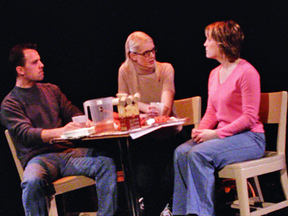
Surely, all that would give way to…something simpler, less fraught. (And don’t call me Shirley). I was a playwright, not a producer.
After a wonderful production of my first full-length play, “To the Top,” at South Carolina’s Trustus Theater back in the last century, I realized…that wasn’t going to happen again very often. And if I waited for someone else to do it, I might be waiting a long time. I kept writing, and sending the plays out…and somewhere in there was accepted into the Turnip Festival with “I’m Gonna Run Away,” a play I was supposed to produce myself! “Oh shit,” I thought. And immediately called Peter Bloch, friend, fellow veteran of John Strasberg’s acting class, and someone who had already started to direct (including a staged reading of one of my short plays at Dixon Place). Peter took me in hand, and showed me what a director does, and gave me shoves in the direction of how to put a show together.
We won “Audience Favorite” that year at Turnip, which came with a check and a trophy. Peter and I went on to produce “The Space Between Heartbeats” at the Samuel French Festival (back when it was at the American Theater for Actors, where there were holes in the stage and about a dozen plays a night). The play was entered under the auspices of Mirror Repertory Company, an off-Broadway company, where I’d worked as assistant/general dogsbody, in one of the more learning-intensive jobs I’ve ever had, to Artistic Director Sabra Jones, and I considered it a great coup when I talked her into playing one of the parts. I didn’t however, actually SEE the performance, as I was backstage, holding up a flat.
Somewhere in there, I was acquiring a tribe: other playwrights who had work they wanted to be produced. We got together one weekend and came up with the idea of organizing a group to send out our work…then one of us suggested: why don’t we pool our resources and put up a night of our work? That is the 2-sentence version of how we formed En Avant Playwrights, with the considerable help of Tina Howe, our mentor at Hunter College.
We produced three nights of new work at Hunter’s Loewe Theater through En Avant over about two years, each playwright producing his or her own play, and all of us divvying up the responsibilities of the overall production. We got stronger in our skills, and connections, and found actors and directors we liked, and kept working with them. Some of us started producing our work elsewhere, with other companies, or on our own.
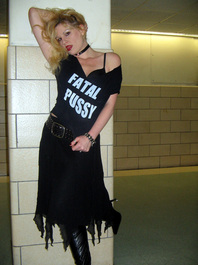
Talking with Peter Bloch, I said: maybe we can produce a bunch of my short plays. And he said: why not a full-length? And I was stunned. I didn’t realize I could do that. So we applied to the Midtown International Theatre Festival with “Grieving for Genevieve,” and got in. We recruited a cast we liked, and had enough friends and followers to make some cool costumes, snag some unique props, and load it all into the wheelchair (which I bought off eBay when this guy’s mom got too fat for it), and pack it into the car (which I’d also paid off with the Millionaire winnings), aka the Propmobile, after each performance. We sold out most of the run, got some good reviews, and I didn’t have to go on (which looked like a distinct possibility when we lost one actor, Derin Altay, to an Equity regional gig…but I was able to convince another actor, Meghan Cary, who’d been in “A Bushel of Crabs” to learn the script in a long weekend and step into the role for the second half of the run).
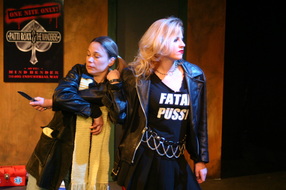
Doric asked me to help with the Robert Chesley/Jane Chambers Playwrights Project, which presents staged readings of new work and revisits GLBT plays that need to be seen. And somehow, I failed to connect that if you present staged readings…you might end up producing them. I kept bringing in cool plays, and Doric and Mark Finley and Barry Childs of TOSOS kept mounting great readings…and you know something’s going to happen here, right?
Somewhere in there, “Rock the Line” won the Robert Chesley Award (which came with a check), and we took the money and went to Ireland…and discovered the International Dublin Gay Theatre Festival. I came back with the resolution that I’d find a way to get one of my plays there. EAT had produced “Some Are People,” directed by Mark Finley, with Karen Stanion, among others, at EATfest, and I thought it would be a perfect candidate for Dublin…along with two plays by Kevin Brofsky and Matt Casarino. Paul Adams said: well, you can go if you take responsibility for it, and I referred to myself as the Dublin “wrangler,” raising money, buying plane tickets, arranging for an invited dress rehearsal…and once there, handing out postcards, buying props, you know, all the stuff the playwright does.
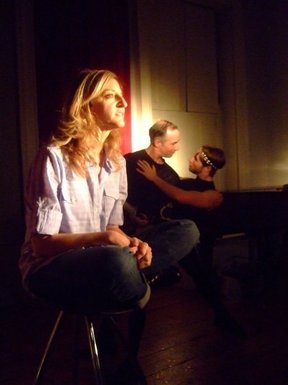
Then Mark said: what if TOSOS produces Meryl Cohn’s “And Sophie Comes Too” in the NY Fringe? And I pretended like I wasn’t going to doing so much, because after all, it wasn’t my play, even though I’d brought it to TOSOS, and I love Meryl’s work (and Meryl). Somewhere in there, I found myself getting the postcards, and taking pictures to use until the real photo shoot happened, and chatting with reviewers I knew and…being on the crew for the shows when the other crew couldn’t be there. It was interesting to sit backstage and listen to the show, and hear stuff that told me things as a playwright; to feel the audience, and compare them from one show to the next, and put it all in the magic trunk to pull out in one form or another some other time.
The next summer, TOSOS produced The Five Lesbian Brothers’ “The Secretaries” in the Fringe, and I said YEAH when Mark announced it. And I was proud to be called Associate Producer. I’ve never been so thrilled to work on someone else’s play…or as pleased with the results. The quality of the work, and what we all brought to it, gave me as much joy as anything I’ve done in the theater.
Though at one point, sitting at the bar at Cowgirl, someone I sort-of-knew came up to me and asked if I’d be interested in doing publicity for her play…and I said: “No, I’m a playwright,” and it left me feeling… unsettled. How come she didn’t know I’m a playwright?
Later, at another EAT show, a friend introduced me to the person she was with, saying “And this is Kathleen…she’s a marvelous publicist and producer…” and I was surprised at how angry that made me, and reminded her: “no, I’m really a playwright…you were in one of my plays, remember?” (And I’m not marvelous. I’m competent, and occasionally inspired).
And somewhere in there, a couple of dear friends passed away, and I helped to produce their celebrations of life; because that’s what it is, when you have a theater, and music and performers, and video and lights and sound. It’s a production. How can you feel obligated or weird about that? Do a budget, arrange for programs, work out a running order…
And now, it’s 2012, and I’m wrangling… organizing…PRODUCING the world premiere of my play, “Outlook,” at the International Dublin Gay Theatre Festival for Emerging Artists Theatre, directed by Mark Finley, with Meghan Cary (from En Avant and Grieving for Genevieve and Rock the Line days), and Donnetta Lavinia Grays (another playwright who produces); Irene Longshore and Danielle Quisenberry from EAT, and Jen Russo as production stage manager; Jen who marched with me in the St. Pat’s for All Parade two weekends ago in Queens, carrying the Dublin banner.
I am a playwright. And producing the work is part of my job. I’m proud to be a member of the Honorary Awards Committee for the New York Innovative Theatre Awards, because they are me: people who do it on inspiration, luck, talent, training and no money. We’re the direct descendents of the Caffe Cino, WOW, LaMama, and all other mothers and fathers of us; all the people in basements and the backs of bars, and Brooklyn, where the audience sits three feet away from the stage (if there’s a stage), and the bathroom is backstage (or not working at all), and when the lights go down, and the bells ring, you can almost hear Joe Cino say, “it’s magic time.”
It’s made me who I am today: a playwright. And a producer.
It’s also completely a manifestation of the economic and class system in America today…but that’s another story for another time.
Below is the IndieGoGo link to our fundraising campaign. You’ll probably be hearing from me soon. Because, you know, I'm a producer. And a playwright.
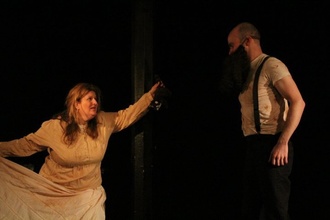
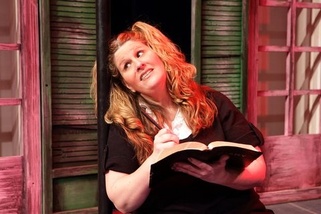
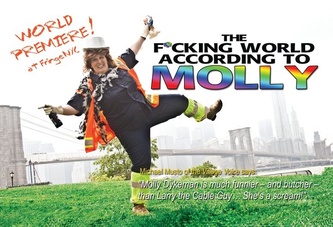
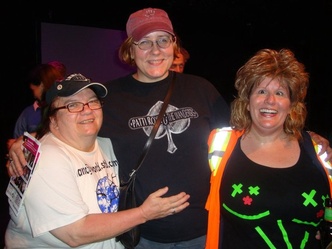
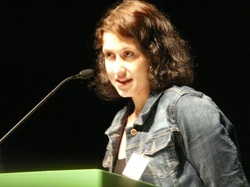
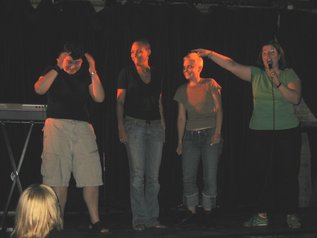
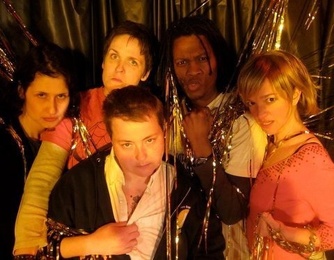
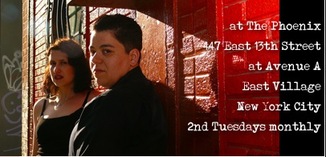
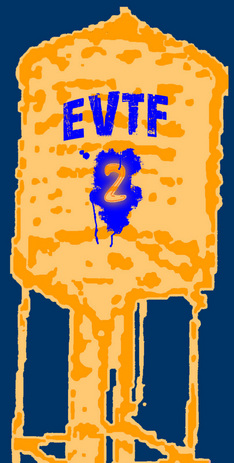
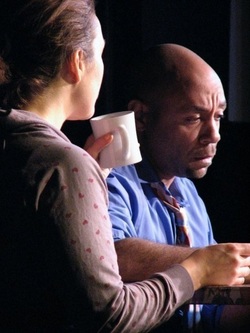
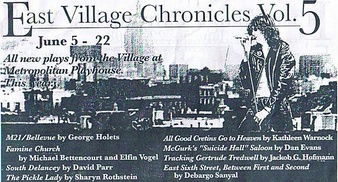
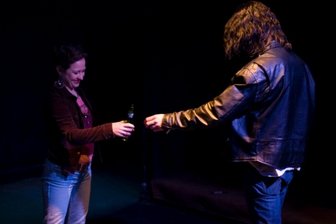
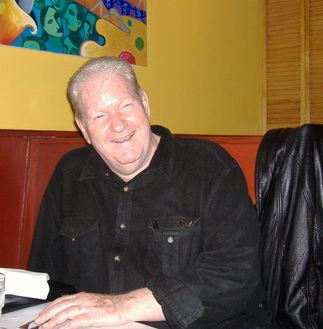
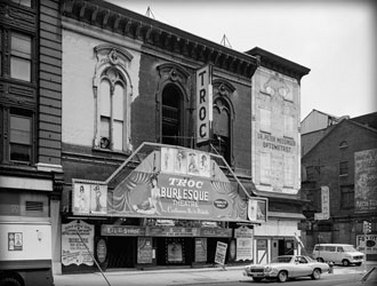
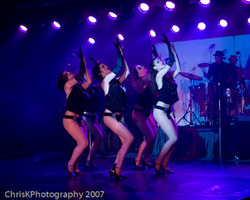
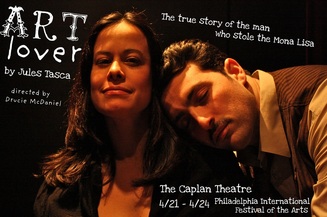

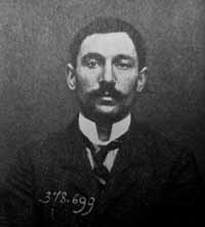
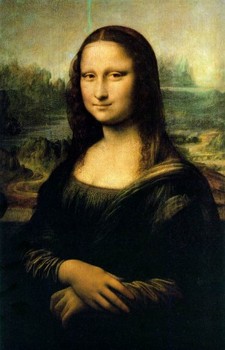
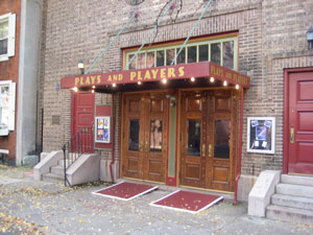
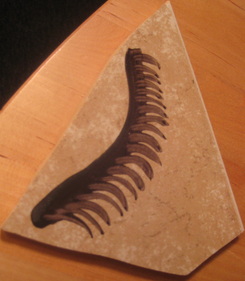
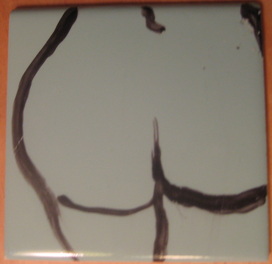
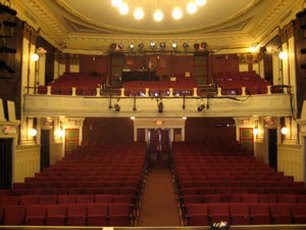
 RSS Feed
RSS Feed
